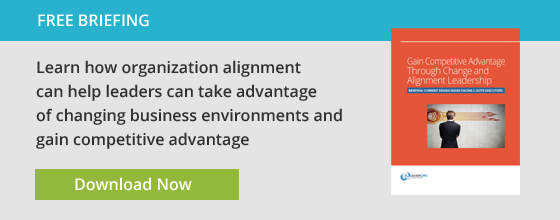Over the past few decades, more and more organizations have established internal organization effectiveness (OE) groups and capabilities, with the idea that OE groups can help them restructure, manage change, and optimize business performance. Each OE group approaches the task uniquely. Some provide hands-on consulting services; others build out a standard tool set that enables others inside the company to maximize their organization effectiveness; others take some type of hybrid approach.
While there is no single right answer for how to do OE “right,” there has been a growing challenge for OE groups: finding good talent. Organizations find themselves on the hunt for OE human capital more frequently than in the past. The demand for these highly specialized skills and expertise is growing, forcing employers to tap into new venues for finding the experts they need. The workplace itself has also become more fluid, and not every need requires a permanent, full-time employee.
Clients have shared with us that they find it especially challenging to fill out their OE teams, where talent searches can go on for 18 months or more. As you might imagine, top candidates in the field are few and far between. When an organization looks to ramp up its OE capabilities, it is often looking to hire two or more practitioners — at a time when the prospects of hiring just one is a challenge. The OE team members already on board in the organization are typically at capacity, dealing with more work than they can effectively handle.
This talent challenge poses several key questions for those leading and building OE practice areas:
- Are there alternative talent pools where good OE talent can be found?
- Are there alternative staffing solutions that will help the organization bridge the gap while it searches for full-time practitioners?
- What are the most effective hybrid delivery models that can leverage external partners to keep pace with internal OE workload demands?
When the field of OE was starting out, we often looked for talent by finding people who possessed unconventional skills, put them in OE roles, and expected them to learn through self-study, attending conferences, and on-the-job experience. As the field matured, we saw more and more formally trained or educated OE professionals with graduate degrees and/or certificates. We also witnessed the desire for the OE professionals we hired to have years of experience in the field.
The question to consider is this: Are we back to a place where we might need to look at some unconventional fields and commit to building OE talent again? For example, are there engineers, finance professionals, or even school teachers who might not have formal OE credentials, but do have the raw skills sets and capabilities needed to become effective OE practitioners?
One solution that is gaining popularity involves tapping into a talent pool that you already know, probably quite well: your consulting partners. I’m not talking about luring your consulting firms’ people away, but rather entering into an agreement in which the firm lends you their talent, for a set length of time and a set monthly fee.
Have you considered engaging a consultant on a temporary assignment for 3 to 6 months to bridge the time it takes to find good, full-time OE team members? AlignOrg Solutions has entered into such agreements with several of our clients, and this has allowed them to keep up with their internal OE demand as well as avoid delaying business results while waiting to find the right internal talent for their teams.
Addressing talent needs through this contingent delivery model offers leaders a versatile solution, particularly for completing short-term projects or filling the gap while they search for a full-time person. Here are a few of the benefits our clients appreciate about this approach:
- No search required: Talent searches are time-consuming and costly; this solution circumvents that process because your consulting firm has already found the talent for you.
- Proven commodity: After having worked with your firm on a client basis, you already have a grasp of their people’s skills, knowledge, and capabilities. Plus, the person will already be familiar with your culture, which means fewer potential surprises on both sides.
- Flexibility: Perhaps your needs don’t quite add up to a need for a full-time employee, or maybe you need the extra help only for a set period of time. With this contingency model, you can arrange for just the amount of support you need, for as long as you need it.
Finally, OE groups may need to rethink their delivery strategies to mix internal, full-time staff and external, contracted support to meet demand. Hybrid delivery models can extend the coverage and scope of the internal OE team without the cost and challenge of ramping up the full-time staff. The cost of the hybrid model is often covered by the internal business clients who are engaging a trusted advisor so that the internal OE team can be more selective on the projects they personally handle. If demand drops, then the internal OE won’t be stuck with underutilized talent; they will be able to scale back because of their variable staffing model.
OE is just one example of an area that calls for creative thinking in addressing present and future human capital needs. So if your needs require creative solutions that lie outside the traditional FTE model, or if finding the right person is proving tougher than expected, you might consider some alternatives to keep up with demand and continue delivering business value.

